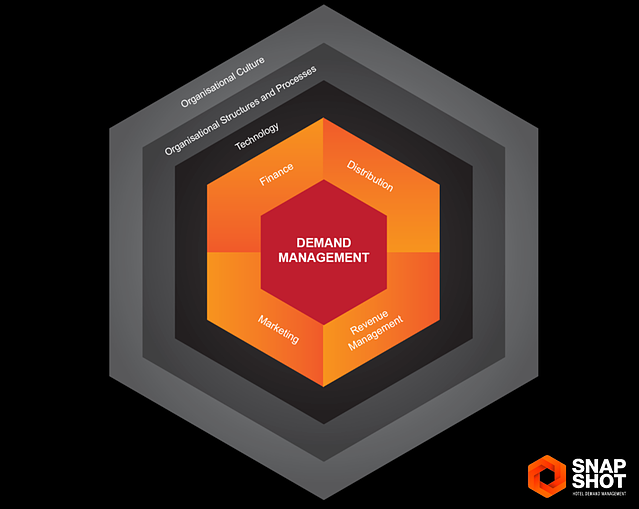
In our last blog post we had discussed why Big Data is not yet a concern for hoteliers. Instead the focus should be on taming the existing small data.
It is understandable that the growing distribution complexity and the increasingly challenging business environment has put hoteliers under pressure to optimize their hotel profitability, increase brand value and strengthen relationships with their customers. A holistic approach to demand management, defined as the merger of Revenue Management, Distribution, Marketing & Finance organizational structures, standards and processes to drive optimal profit & performance has therefore become a must. A harmonious approach to Demand Management consists of two major elements: organisation and technology.

Although "Demand Manager" is not (yet) a position within hotels' organisational structures, it is Revenue Managers who have in the past taken the lead in managing a hotel's demand (performance). Being equipped with a broad selection of performance and market intelligence tools, they can now obtain valuable information about their hotel's demand from a variety of angles. In theory, all these tools have their distinctive functionality and are designed to provide comprehensive answers to the specific questions asked.

Let us take a look at how the first 60 minutes of a Revenue Manager's day looks like in reality.
In Reality...
... it can get messy. Critical performance data is stored in inconsistent chunks in disconnected systems, oftentimes "connected" with Excel sheets aggregating data from multiple data sources. First of all, this leads to an increased risk of erroneous data due to human error. Secondly, and even more importantly, investing extensive amounts of time and effort in data preparation leaves little to no time to thorough data analysis. Now these are real opportunities lost.

Introducing a Demand Management culture in your organisation is undoubtedly beneficial, but it will unfortunately not bear results tomorrow. Don't panic. There are a few things you can consider doing today to increase the value from your data:
...or what we call the "real BI". This means engineering smart notifications to occur, whenever simultaneous changes occur within multiple data points. We are not talking specifically about stand-alone alerts whenever pick-up is >20 rooms in a particular segment for a particular day, but rather those where in isolation would be deemed low priority but combined reflect a potential change in demand or consumer booking behaviour. Consider the following examples:
Ad-hoc: notify when:
Past 24 hour benchmark: notify when:
User Performance Analysis for a specific date: notify when:
No OTA Commission override in placeOTA Channel dropped below position X within the available market
Having intelligent business rules in place will make you better understand your business and user performance and enable you to promptly make appropriate actions.
Whilst booking pace and pick-up trend analysis is commonplace, there are many additional (hotel) user-generated & third party analytics available. Tracking those within the forecast environment for progressional trends and analysis during the active forecast/booking window will give you additional meaningful insights into your hotel's performance. Considering the following:
Everybody understands the importance of setting goals and planning tactics to achieve those. Having this information at hand during day to day activities however often gets undervalued. The recommended approach is therefore to link your forecast, strategy and budget data in an operational document, used as day-to-day support for all your demand-management-related activities. Doing so will ensure you always keep your goals in sight and can better maneuver in the process of achieving those.
There is a big chance you are already doing all of the above and are rather interested in how to make these activities more streamlined, more automated and hence more efficient. For those that don't, we understand that the recommendations made here require a serious commitment and remain a great challenge to implement and maintain without dramatically increasing the workload.
This is exactly the reason why the idea of SnapShot was born - enabling hotels to better curate their data, save time by eliminating redundant manual tasks and increase profitability by the means of more thorough analysis and understanding of their hotel performance.
Continue reading out blog to learn more about Demand Management and how and what you can do to improve co-working in your organisation.
Yours truly,
SnapShot Team